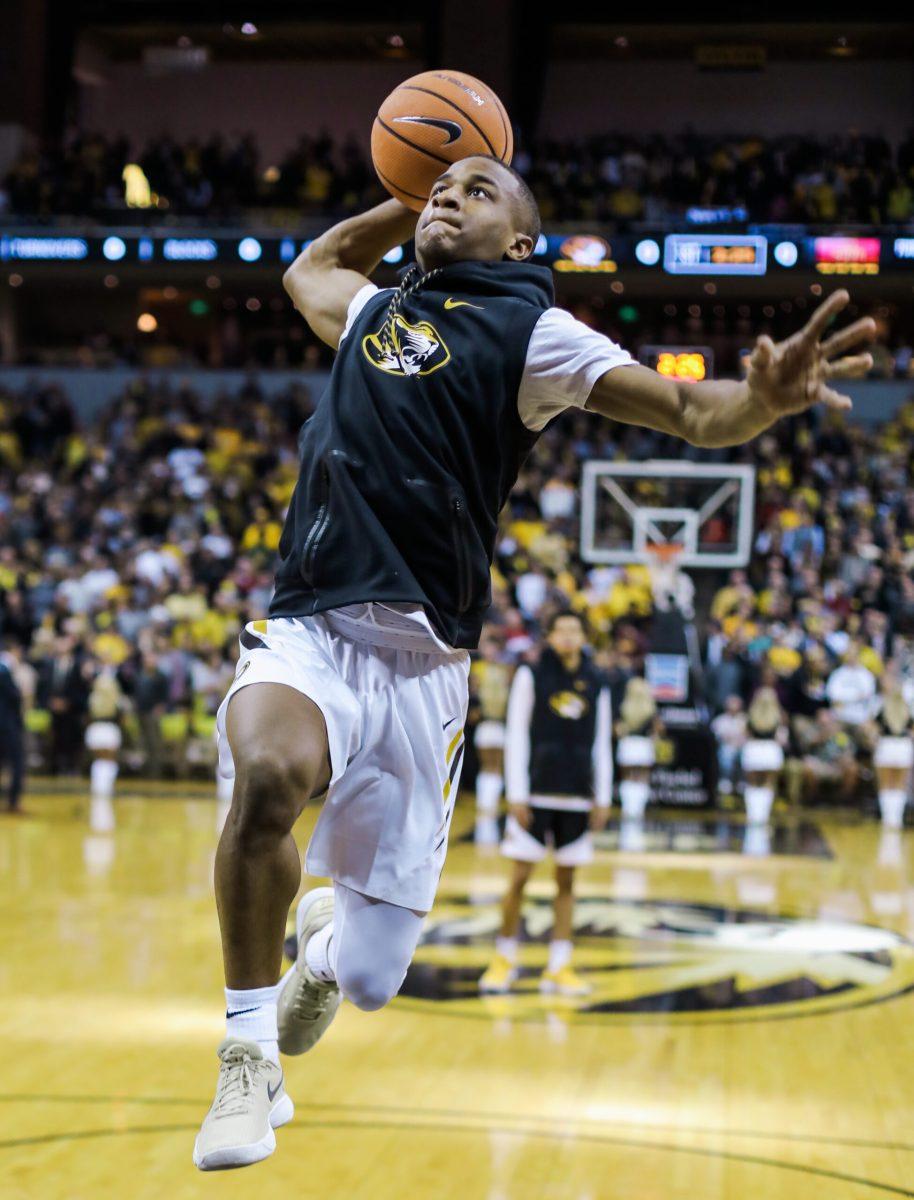
The plot roller coaster is literature’s most undeniably basic story structure.
The refreshingly simple template never seems to fail at charming its consumers — that is, unless its classic up-and-down visual becomes the consistent model for the plotlines of a basketball team’s games.
The Missouri men’s basketball program has spent the 2017-18 season making itself an antihero to that exact unpleasant twist. The expectation-defying season has been nothing short of a roller coaster, and the Tigers’ success — or lack thereof — in many of their games has taken the now grisly form of that imposing rise-and-fall.
So have their fans’ stomachs.
Promising starts have made way for big leads and bigger leads and peak leads — and with it all, elation and hope like most MU students haven’t experienced before.
Then comes the drop.
When Mizzou (13-6, 3-3) has led by double digits this season, seven times that lead has dissipated by either 10-plus points or into a one-possession game … at least. Once it’s close, there’s not much hope left to hold onto. With heart-wrenching defeats to West Virginia, Florida and Arkansas in the final seconds, Missouri has come to expect disappointment if it doesn’t have a substantial enough lead by the last media timeout.
The Maneater has compiled numbers from the ends of those three losses, along with similarly patterned contests against Central Florida, Stephen F. Austin, South Carolina and Tennessee, to examine just how lousy Missouri can be late in games after seemingly being in control.
The statistics recorded all share one trait: they are Mizzou’s numbers for the remainder of a game after the point in the second half at which its win probability was highest; that is to say, the top of the roller coaster lift, just before the drop.
The steepest of those drops was a 16-point collapse to West Virginia in what could’ve been a win to resonate from November to March. After having a win probability of 98.7 percent with 7:58 to go, the Tigers were outscored 31-11, only making two more field goals while committing nine turnovers and registering just one assist.
Poor shooting, turnover-to-assist ratio and rebounding have all made a pattern out of their untimely appearances. Mizzou shot 3 of 8 and was outrebounded 9 to 4 in the last 7:58 to Florida while a 20-9 run erased the Tigers’ 90.2 percent win probability. They only had one turnover during the stretch, but it was their most haunting of the season.
Nine more turnovers nearly haunted them as a 13-point lead and 96.3 percent odds evaporated against Stephen F. Austin last month. Missouri held on by the claws, but only after a 1-for-7 finish from deep helped the lead close to 1.
Amidst other close calls, heartbreak resurfaced in Fayetteville. Mizzou stormed back to lead Arkansas by 6, but no field goals in the last 4:43 brought an 83.1 percent win probability to zero. Holding on for dear life was all the team could do while similarly going the last 6:42 without a field goal against Tennessee.
Just how bad are these meltdowns? After hitting the drop in those seven games, Missouri is a cumulative 16 for 55 from the field and 3 for 20 from outside, with 25 turnovers to just eight assists and a minus-17 in rebounding. This is across a total of approximately 60 minutes though, which brings about the real question: Exactly how bad is the drop? When mathematically converted to a regulation, 40-minute contest, what results would those stats produce on average if Mizzou played all game like it was protecting a second half lead?
A 102-50 loss.
Missouri has a lot of work to do if it wants to be playing basketball in the second half of March. Whether it be youthful inexperience or poor situational coaching that’s costing it games late, the team simply has to finally get over that hump; or rather, to not get over that hump.
_Edited by Joe Noser | [email protected]_